-
Engine1.8L I4 / 4.4 kWh Li-ion
-
Power134 HP (combined)
-
TransmissionCVT
-
DrivetrainFront-Wheel Drive
-
Curb Weight3,165 LBS
-
Seating2+3
-
Cargo21.6 CU-FT
-
MPG49 MPG / 87 MPGe comb. (*est.)
You Say You Want An Evolution?
Here's a game that the first people who buy the 2012 Toyota Prius Plug-in Hybrid should play with their other Prius-driving friends: Let them slide behind the wheel and see if they can even tell that it isn't a standard, third-generation Prius. Very few will be able to tell. That's how subtle the changes are between the two vehicles, at least, to someone who isn't looking too closely. After driving the corded Prius in California recently, we can confidently say that from both the outside and behind the wheel, the Prius Plug-in Hybrid looks, drives and feels pretty much like any other example of the world's most popular hybrid. Of course, this Prius does receive some important advances – ones that hardcore fans will notice them right away – but it's more than obvious that Toyota's strategy with its new model is evolution, not revolution.
The changes start with the plug-in's new lithium-ion battery pack. Much smaller than the packs used in the two most popular plug-in vehicles on the market, the Prius Plug-in's 176-pound, 4.4-kWh battery pack offers just enough juice, Toyota says, for an "electric-only driving range of up to 15 miles at a maximum speed of 62 mile-per-hour" (More on how this isn't exactly true after the jump).
For the sake of comparison, the all-electric Nissan Leaf has an official range of 73 miles from its 24-kWh pack and the Chevrolet Volt is rated at 35 miles on a full charge of its 16-kWh pack before the range-extending gas engine kicks in. Of course, in the interest of self-preservation, none of these plug-ins use all of the energy capacity that their batteries can hold, though. That said, even though the Prius Plug-in Hybrid's pack is small compared to other plug-ins, it is clearly light years more sophisticated than the standard Prius' 1.3-kWh nickel-metal hydride pack. If you know nothing else about the changes to the plug-in Prius, this is the one to take note of.
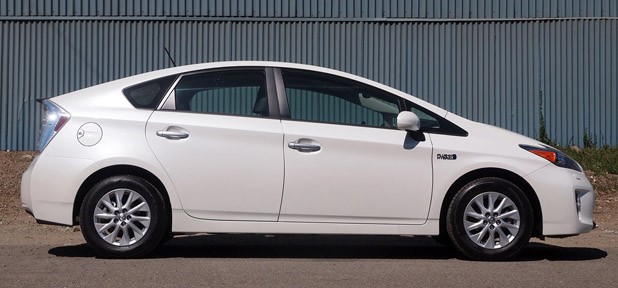
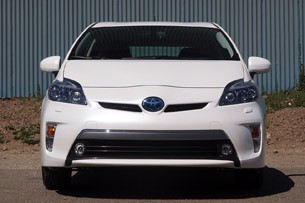
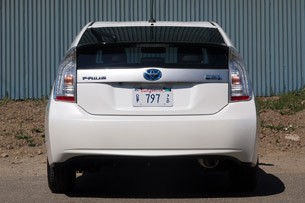
Sure, there are hints that this isn't a regular Prius before you start driving. Small front wheel well and rear badges now say Plug-in Hybrid instead of just Hybrid, and the model also sports unique wheels. Naturally, this model also benefits from the same modest suite of updates that the regular Prius receives for 2012, including new head- and taillamps (the former tinted blue on the PHEV), as well as a revamped front fascia and bumper.
Powering up the car, which is the same push-button experience that Prius drivers are used to, calls up a new Flash screen. Mostly, though, getting into the Prius Plug-in Hybrid conveys the exact same feeling as getting into a standard one. This is why we can't help but assume that Toyota is targeting buyers who want a better Prius, not necessarily the enthusiastic early adopters who have the wherewithal to pay bigger dollars for a Tesla Roadster or a Volt, or those who desire the all-electric purity of the Leaf. Because that's really what the Prius Plug-in Hybrid is: a better Prius. If you charge it up – which takes just two-and-a-half to three hours from a standard 110-volt outlet (or around 90 minutes with a Level 2 charger that Toyota will sell you for $999) then you can muster a dozen or so miles of city driving without any local emissions. The 24-foot charge cord stows conveniently in a recess below the cargo hold floor.
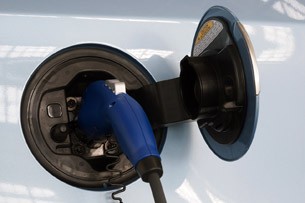
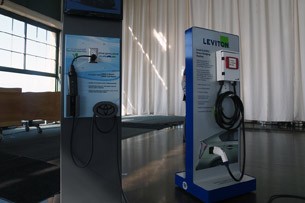
When you take the car out on the highway, you can cruise for hours using the 1.8-liter DOHC four-cylinder, the same 98-horsepower, 105-pound-feet of torque Atkinson-cycle engine found in the garden-variety Prius. And, because of the way Toyota has made the different driving modes selectable at any time, if you live in the suburbs and your commute starts on the highway before getting into a downtown area, you can burn gas until you exit and then switch over to EV mode. Clever, huh? It's just like a regular Prius, only better.
The Prius Plug-in Hybrid has three driving modes: EV, Eco and Power. Regular Prius drivers will be familiar with these options (surprise!), but the EV mode here operates at higher speeds and for longer distances. The Power mode makes acceleration modestly sportier and the Eco mode emphasizes efficiency (we expect most Prius drivers will keep it engaged whenever possible, especially when gas prices start their next climb).. That leaves us with the "EV" mode, and you'd be forgiven for thinking that turning this on makes your Prius operate like an electric vehicle whenever there is enough power in the battery. You'd be close, but not quite right.
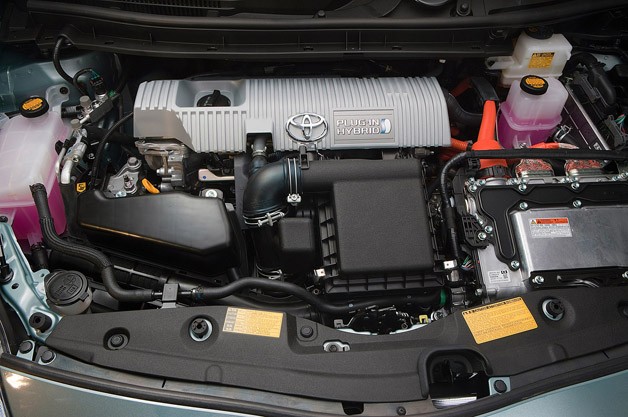
As mentioned, Toyota admits that the top speed in EV mode is 62 mph. What the automaker doesn't make as clear is that you can easily engage the gas engine at speeds well below that threshold if you punch the go pedal. Almost any sudden throttle inputs will force the combustion of some of your precious petroleum. If you're cruising on the highway at, say, 60 mph, and let your speed dip to 55 and then nudge it back up to 60, you can do so on battery power. But, if you try to go from 55 to 60 more quickly (in a passing situation, for example), you will, again, burn fuel. It's a shame that one of the most fun things about driving an electric vehicle – instant torque – is missing here, but we doubt this will be a deal breaker for most of the people who consider buying a Prius Plug-in Hybrid. Since Toyota has over a decade's worth of experience figuring out how to sell a simple-to-use hybrid car to the masses, we are pretty sure the engineers and marketers there doubt it, too.
(Note: The Prius Plug-in Hybrid we drove was a pre-production prototype, but the chances that Toyota will alter anything major between now and the initial launch next spring are slim).
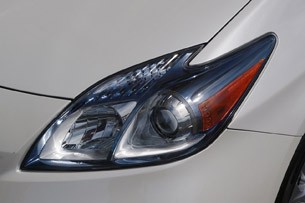
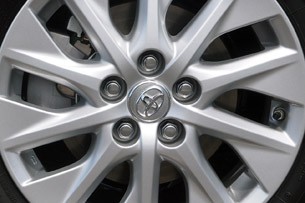
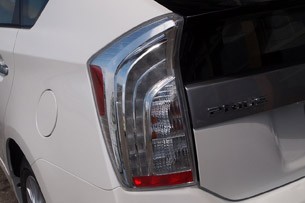
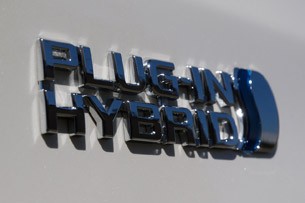
Whether operating on battery or gasoline, the plug-in Prius drives and handles almost exactly like a standard third-gen Prius, love it or loathe it. That means you get the same front-drive traction, the same constant velocity transmission, the same easy-breezy, feel-free electric power steering, and the same combined 134 horsepower from the engine and the pair of high-output electric motors. To its eternal credit, even with its bigger, heavier battery pack, Toyota has managed to keep overall weight gain between the two vehicles to just 124 pounds (3,165 lbs. vs. 3,042). Many tricks were used to keep the weight down, including relocating the charge port. Older development models had a port above the passenger-side front wheel, with wires tailing back to the onboard charger mounted under the front passenger seat, then running to the battery pack in the back. Now, the port and charger are located by the rear passenger wheel, which reduces the amount of internal wiring needed. It will probably take some getting used to for drivers to remember that gas is on the left side, electricity goes into the right side, but different input locations are a reality for every plug-in hybrid – and it really shouldn't be a big deal for owners to get used to.
From the driver's seat, the Prius surrounds you with information. A head-up display is available on the Advanced trim level, and Toyota has also redesigned some of the information you can get from the info screen on both trim levels. There is now a monthly fuel consumption record available, for example, which emphasizes the sort of futuristic, computer-based driving experience that the Prius encourages. Toyota's Entune infotainment system will also be standard equipment, and this marks the point where car and cell phone begin to merge. Entune provides access to Pandora, iHeartRadio, Bing, Movie Tickets and OpenTable. The Advanced trim level will get the following plug-in vehicle-specific apps standard: Charge Management, Remote Air Conditioning System, Charging Station Map, Vehicle Finder and Eco Dashboard. We didn't get to test all of these features out, since they are still being worked on. There will also be a way to log-in to XM Stocks, but if you need to check on all this stuff while driving, you probably shouldn't be on the road while doing so, eh? While most of these capabilities are new, one feature unfortunately remains very much the same: the Prius' reversing beep. Argh.
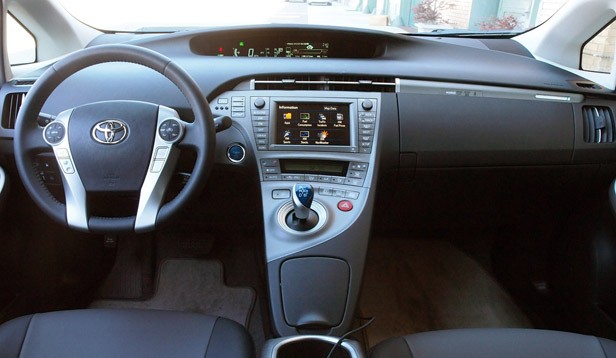
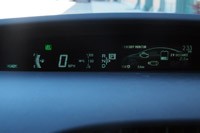
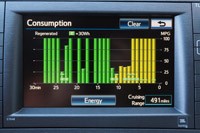
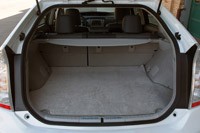
A welcome change from an earlier prototype we sampled is that no trunk space has been lost compared to the third-gen Prius. Even though there is no Prius V Plug-in (perhaps that's coming down the line), the normal Prius design offers plenty of practicality. There is room for five and plenty of storage in back. Try putting as much into any other plug-in hybrid on the market, like the Volt or – ha! – the Fisker Karma.
Prices for the Prius Plug-in Hybrid start at $32,000 and the top-of-the-line Advanced will cost $39,525; reservations for both start next month. Most buyers should be able to get a federal tax credit of $2,500 to ease the sting. Toyota believes the car will be blessed with a fuel economy rating of 87 mpg equivalent and that it will get 49 mpg (combined) when operating only on gasoline. Compare this to the Volt, which gets just 37 mpg combined (using premium fuel) when the battery runs out (after many more EV miles, granted). The plugless Prius achieves 50 mpg combined, so 49 could be seen as a step backwards, but in real-world driving, it's likely to be a wash. What's more, the Prius Plug-in should also quality for the California Air Resources Board's Enhanced Advanced Technology Partial Zero Emissions Vehicle (AT-PZEV) emissions rating. If and when it does, say hello to High Occupancy Vehicle lane cruising, California drivers! For some, this will be all the improvement that Toyota needs to give the standard Prius, since the Golden State's coveted carpool lane exemption for eligible hybrids ran out on July 1.
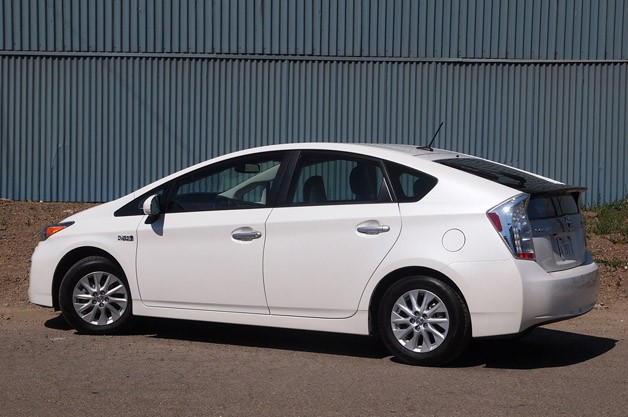
Toyota has yet to announce pricing for the regular 2012 Prius, but 2011 models range from $23,520 to $28,790, with no tax incentives available. If your commute is more than a dozen miles or doesn't involve traffic-packed roadways, will the extra thousands make the charging capability worthwhile? Perhaps not, but we're guessing that won't stop most potential customers from making the leap anyhow. The plug-in Prius will be available in 14 west and east coast states in the spring of 2012 and it's scheduled to roll out across the country in 2013.
How popular will the improved Prius be? Toyota is forecasting 15,000 sales in the first full year (70 percent of which will likely be the base model, 30 percent Advanced). From where we sit, that seems like a pretty conservative expectation, at least if Toyota doesn't have any production constraints (especially considering that that the regular-old Prius netted nearly 141,000 sales just last year). Given Toyota's recent expansion of the Prius brand and a fresh blitz of marketing dollars, some inside the company expect it to eventually become the company's best-selling nameplate. If the Prius family continues to expand and improve at this clip, we wouldn't be at all surprised if they're right.
Here's a game that the first people who buy the 2012 Toyota Prius Plug-in Hybrid should play with their other Prius-driving friends: Let them slide behind the wheel and see if they can even tell that it isn't a standard, third-generation Prius. Very few will be able to tell. That's how subtle the changes are between the two vehicles, at least, to someone who isn't looking too closely. After driving the corded Prius in California recently, we can confidently say that from both the outside and behind the wheel, the Prius Plug-in Hybrid looks, drives and feels pretty much like any other example of the world's most popular hybrid. Of course, this Prius does receive some important advances – ones that hardcore fans will notice them right away – but it's more than obvious that Toyota's strategy with its new model is evolution, not revolution.
The changes start with the plug-in's new lithium-ion battery pack. Much smaller than the packs used in the two most popular plug-in vehicles on the market, the Prius Plug-in's 176-pound, 4.4-kWh battery pack offers just enough juice, Toyota says, for an "electric-only driving range of up to 15 miles at a maximum speed of 62 mile-per-hour" (More on how this isn't exactly true after the jump).
For the sake of comparison, the all-electric Nissan Leaf has an official range of 73 miles from its 24-kWh pack and the Chevrolet Volt is rated at 35 miles on a full charge of its 16-kWh pack before the range-extending gas engine kicks in. Of course, in the interest of self-preservation, none of these plug-ins use all of the energy capacity that their batteries can hold, though. That said, even though the Prius Plug-in Hybrid's pack is small compared to other plug-ins, it is clearly light years more sophisticated than the standard Prius' 1.3-kWh nickel-metal hydride pack. If you know nothing else about the changes to the plug-in Prius, this is the one to take note of.



Sure, there are hints that this isn't a regular Prius before you start driving. Small front wheel well and rear badges now say Plug-in Hybrid instead of just Hybrid, and the model also sports unique wheels. Naturally, this model also benefits from the same modest suite of updates that the regular Prius receives for 2012, including new head- and taillamps (the former tinted blue on the PHEV), as well as a revamped front fascia and bumper.
Powering up the car, which is the same push-button experience that Prius drivers are used to, calls up a new Flash screen. Mostly, though, getting into the Prius Plug-in Hybrid conveys the exact same feeling as getting into a standard one. This is why we can't help but assume that Toyota is targeting buyers who want a better Prius, not necessarily the enthusiastic early adopters who have the wherewithal to pay bigger dollars for a Tesla Roadster or a Volt, or those who desire the all-electric purity of the Leaf. Because that's really what the Prius Plug-in Hybrid is: a better Prius. If you charge it up – which takes just two-and-a-half to three hours from a standard 110-volt outlet (or around 90 minutes with a Level 2 charger that Toyota will sell you for $999) then you can muster a dozen or so miles of city driving without any local emissions. The 24-foot charge cord stows conveniently in a recess below the cargo hold floor.


When you take the car out on the highway, you can cruise for hours using the 1.8-liter DOHC four-cylinder, the same 98-horsepower, 105-pound-feet of torque Atkinson-cycle engine found in the garden-variety Prius. And, because of the way Toyota has made the different driving modes selectable at any time, if you live in the suburbs and your commute starts on the highway before getting into a downtown area, you can burn gas until you exit and then switch over to EV mode. Clever, huh? It's just like a regular Prius, only better.
The Prius Plug-in Hybrid has three driving modes: EV, Eco and Power. Regular Prius drivers will be familiar with these options (surprise!), but the EV mode here operates at higher speeds and for longer distances. The Power mode makes acceleration modestly sportier and the Eco mode emphasizes efficiency (we expect most Prius drivers will keep it engaged whenever possible, especially when gas prices start their next climb).. That leaves us with the "EV" mode, and you'd be forgiven for thinking that turning this on makes your Prius operate like an electric vehicle whenever there is enough power in the battery. You'd be close, but not quite right.

As mentioned, Toyota admits that the top speed in EV mode is 62 mph. What the automaker doesn't make as clear is that you can easily engage the gas engine at speeds well below that threshold if you punch the go pedal. Almost any sudden throttle inputs will force the combustion of some of your precious petroleum. If you're cruising on the highway at, say, 60 mph, and let your speed dip to 55 and then nudge it back up to 60, you can do so on battery power. But, if you try to go from 55 to 60 more quickly (in a passing situation, for example), you will, again, burn fuel. It's a shame that one of the most fun things about driving an electric vehicle – instant torque – is missing here, but we doubt this will be a deal breaker for most of the people who consider buying a Prius Plug-in Hybrid. Since Toyota has over a decade's worth of experience figuring out how to sell a simple-to-use hybrid car to the masses, we are pretty sure the engineers and marketers there doubt it, too.
(Note: The Prius Plug-in Hybrid we drove was a pre-production prototype, but the chances that Toyota will alter anything major between now and the initial launch next spring are slim).




Whether operating on battery or gasoline, the plug-in Prius drives and handles almost exactly like a standard third-gen Prius, love it or loathe it. That means you get the same front-drive traction, the same constant velocity transmission, the same easy-breezy, feel-free electric power steering, and the same combined 134 horsepower from the engine and the pair of high-output electric motors. To its eternal credit, even with its bigger, heavier battery pack, Toyota has managed to keep overall weight gain between the two vehicles to just 124 pounds (3,165 lbs. vs. 3,042). Many tricks were used to keep the weight down, including relocating the charge port. Older development models had a port above the passenger-side front wheel, with wires tailing back to the onboard charger mounted under the front passenger seat, then running to the battery pack in the back. Now, the port and charger are located by the rear passenger wheel, which reduces the amount of internal wiring needed. It will probably take some getting used to for drivers to remember that gas is on the left side, electricity goes into the right side, but different input locations are a reality for every plug-in hybrid – and it really shouldn't be a big deal for owners to get used to.
From the driver's seat, the Prius surrounds you with information. A head-up display is available on the Advanced trim level, and Toyota has also redesigned some of the information you can get from the info screen on both trim levels. There is now a monthly fuel consumption record available, for example, which emphasizes the sort of futuristic, computer-based driving experience that the Prius encourages. Toyota's Entune infotainment system will also be standard equipment, and this marks the point where car and cell phone begin to merge. Entune provides access to Pandora, iHeartRadio, Bing, Movie Tickets and OpenTable. The Advanced trim level will get the following plug-in vehicle-specific apps standard: Charge Management, Remote Air Conditioning System, Charging Station Map, Vehicle Finder and Eco Dashboard. We didn't get to test all of these features out, since they are still being worked on. There will also be a way to log-in to XM Stocks, but if you need to check on all this stuff while driving, you probably shouldn't be on the road while doing so, eh? While most of these capabilities are new, one feature unfortunately remains very much the same: the Prius' reversing beep. Argh.




A welcome change from an earlier prototype we sampled is that no trunk space has been lost compared to the third-gen Prius. Even though there is no Prius V Plug-in (perhaps that's coming down the line), the normal Prius design offers plenty of practicality. There is room for five and plenty of storage in back. Try putting as much into any other plug-in hybrid on the market, like the Volt or – ha! – the Fisker Karma.
Prices for the Prius Plug-in Hybrid start at $32,000 and the top-of-the-line Advanced will cost $39,525; reservations for both start next month. Most buyers should be able to get a federal tax credit of $2,500 to ease the sting. Toyota believes the car will be blessed with a fuel economy rating of 87 mpg equivalent and that it will get 49 mpg (combined) when operating only on gasoline. Compare this to the Volt, which gets just 37 mpg combined (using premium fuel) when the battery runs out (after many more EV miles, granted). The plugless Prius achieves 50 mpg combined, so 49 could be seen as a step backwards, but in real-world driving, it's likely to be a wash. What's more, the Prius Plug-in should also quality for the California Air Resources Board's Enhanced Advanced Technology Partial Zero Emissions Vehicle (AT-PZEV) emissions rating. If and when it does, say hello to High Occupancy Vehicle lane cruising, California drivers! For some, this will be all the improvement that Toyota needs to give the standard Prius, since the Golden State's coveted carpool lane exemption for eligible hybrids ran out on July 1.

Toyota has yet to announce pricing for the regular 2012 Prius, but 2011 models range from $23,520 to $28,790, with no tax incentives available. If your commute is more than a dozen miles or doesn't involve traffic-packed roadways, will the extra thousands make the charging capability worthwhile? Perhaps not, but we're guessing that won't stop most potential customers from making the leap anyhow. The plug-in Prius will be available in 14 west and east coast states in the spring of 2012 and it's scheduled to roll out across the country in 2013.
How popular will the improved Prius be? Toyota is forecasting 15,000 sales in the first full year (70 percent of which will likely be the base model, 30 percent Advanced). From where we sit, that seems like a pretty conservative expectation, at least if Toyota doesn't have any production constraints (especially considering that that the regular-old Prius netted nearly 141,000 sales just last year). Given Toyota's recent expansion of the Prius brand and a fresh blitz of marketing dollars, some inside the company expect it to eventually become the company's best-selling nameplate. If the Prius family continues to expand and improve at this clip, we wouldn't be at all surprised if they're right.
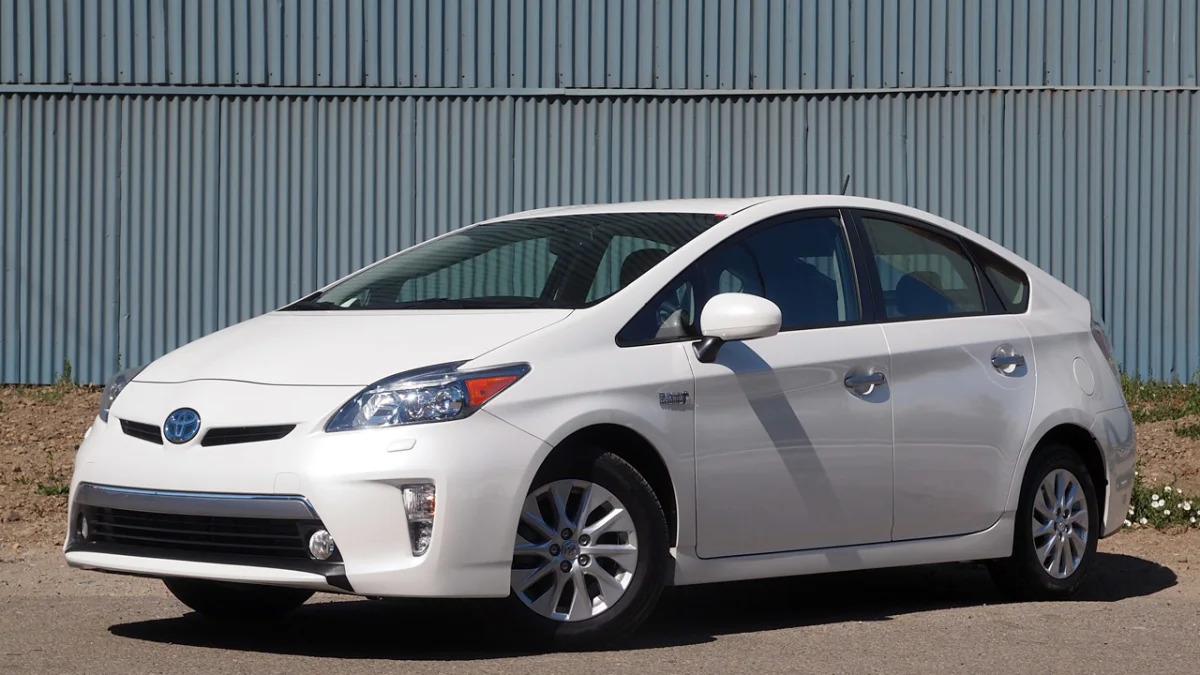










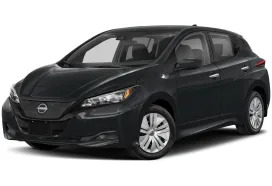

Sign in to post
Please sign in to leave a comment.
Continue